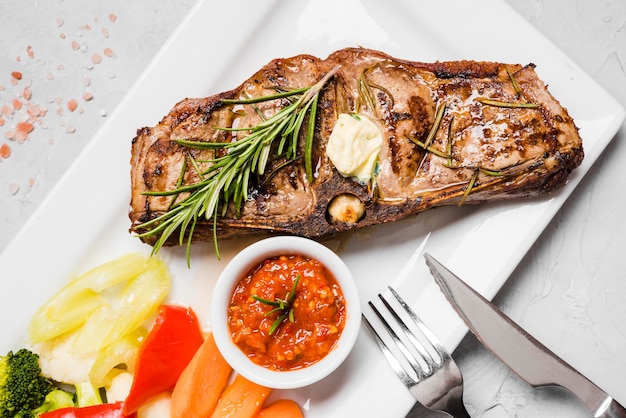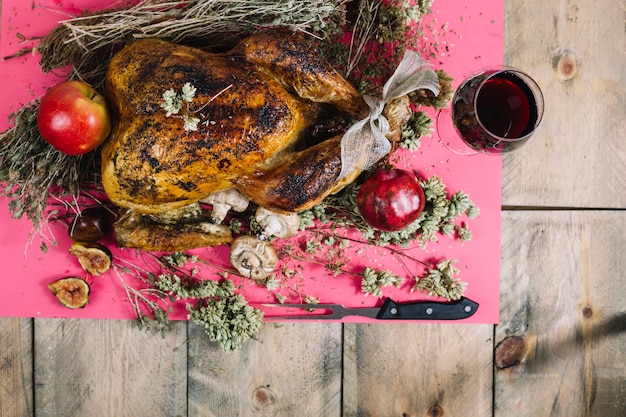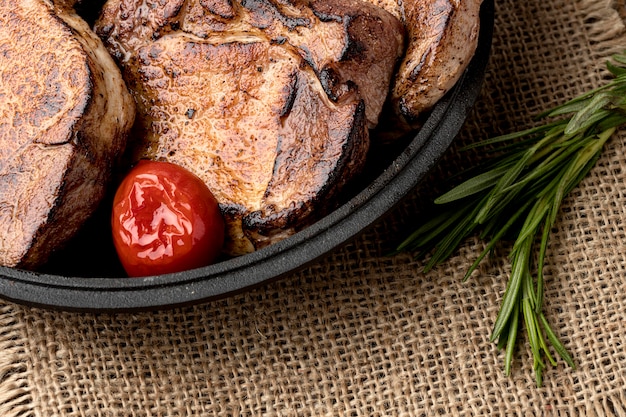Ah, the tenderloin. It’s not just a cut of meat; it’s a culinary masterpiece. A luxurious piece of beef so tender it practically melts in your mouth, it's the ultimate crowd-pleaser and a symbol of special occasions. But let’s be honest, the mere mention of "tenderloin" can send shivers down the spine of even the most confident cook. It’s expensive, it’s delicate, and it's easy to overcook.
But fear not, fellow food enthusiasts! I'm here to guide you through every step, from selecting the perfect tenderloin to mastering the art of cooking it to perfection. We'll delve into the secrets of different cooking methods, explore the essential role of side dishes and sauces, and conquer the art of carving. By the end of this guide, you'll be a tenderloin whisperer, transforming this culinary gem into a masterpiece that’ll leave your guests speechless.
(Part 1) The Basics

Understanding the Tenderloin: A Culinary Gem
The tenderloin, also known as the filet mignon, is the most tender cut of beef. It comes from the "loin" of the cow, the area just above the hind legs. Imagine a long, thin muscle that doesn't see much action, resulting in a cut so tender it practically melts in your mouth. It's no surprise this cut is considered the "Rolls Royce" of beef.
Why is Tenderloin So Expensive?
Now, about that price tag… It’s a bit of a shock, but let’s face it, you’re getting a premium product. This cut is lean with minimal fat, resulting in a succulent taste. It's also relatively small, meaning you're paying for quality rather than quantity. But trust me, the taste and texture are worth every penny.
Where to Find Your Perfect Cut
Finding a tenderloin isn't rocket science. You can find it at most good butchers or supermarkets. When choosing, look for a cut with a bright red color, firm to the touch, and with a good amount of marbling. Avoid cuts that look dry, discolored, or have an overly strong smell.
Choosing the Right Tenderloin: A Matter of Marbling
The key to a perfect tenderloin lies in selecting the right cut. Here's what to look for:
- Marbling: Those flecks of fat, or marbling, are your best friends. They’re what give the meat its flavor and tenderness. A good balance is key – not too much, not too little.
- Fat Cap: The tenderloin usually comes with a fat cap, a layer of fat that protects the meat during cooking and adds richness. Don't remove it! It's your friend.
- Color: A deep, rich red is the color you want. Pale or brown color indicates a less fresh cut, which you want to avoid.
Prepping for Success: Bringing Your Tenderloin to Room Temperature
Don't rush straight into cooking! A little preparation goes a long way:
- Room Temperature: Remove the tenderloin from the fridge at least an hour before you plan to cook it. This ensures even cooking and prevents a cold center.
- Seasoning: Salt and pepper are your best friends here. Season generously, but remember, less is often more. Let the natural flavor of the tenderloin shine.
(Part 2) Cooking Methods

Roasting: A Classic for a Reason
Roasting is the most common method for cooking a tenderloin, and for good reason. It results in a perfectly cooked center with a beautifully browned exterior.
- Oven Temperature: Preheat your oven to 400 degrees F (200 degrees C). The high temperature sears the outside, creating a delightful crust, while the inside stays tender and juicy.
- Cook Time: The cook time depends on the size of your tenderloin. A general rule of thumb is 10-12 minutes per pound for medium-rare. But always trust a meat thermometer to confirm the internal temperature.
- Resting Time: This is crucial! After the tenderloin is cooked, let it rest for at least 10 minutes before carving. This allows the juices to redistribute throughout the meat, making it even more tender and flavorful.
Pan-Seared: Quick and Delicious
If you're short on time, pan-searing is a great way to cook a tenderloin. It's fast, flavorful, and incredibly easy.
- Heat Your Pan: Use a heavy-bottomed pan, like cast iron, and heat it over medium-high heat. A screaming hot pan is essential for a beautiful sear.
- Searing Perfection: Sear the tenderloin for 3-4 minutes per side, until it develops a golden-brown crust. This step locks in the juices and adds fantastic flavor.
- Finishing Touch: Transfer the seared tenderloin to a preheated oven (400 degrees F) and cook for 5-7 minutes per side for medium-rare.
Sous Vide: Precision Cooking for the Perfectionist
sous vide cooking is all about precision and control, offering a remarkably consistent outcome. If you’re looking for a foolproof method, this is it.
- Vacuum Seal: Vacuum-seal your tenderloin in a bag with your favorite seasoning blend. It’s like a spa treatment for your meat.
- water bath: Submerge the sealed bag in a water bath set to your desired temperature (130-135 degrees F for medium-rare). Think of it as a perfectly controlled sauna for your tenderloin.
- Cook Time: Cook the tenderloin for at least an hour, up to 2 hours for thicker cuts. It’s a slow and gentle cooking process that ensures even cooking throughout.
- Final Sear: For a beautiful crust, sear the tenderloin in a hot pan for 1-2 minutes per side after sous vide cooking.
Grilling: Summertime Perfection
For outdoor enthusiasts, grilling is a fantastic way to cook tenderloin. It imparts a smoky flavor and creates those alluring grill marks.
- Pre-Heat: Preheat your grill to medium-high heat. Make sure it's nice and hot for those coveted grill marks.
- Cook Time: Cook the tenderloin for 5-7 minutes per side, or until it reaches your desired internal temperature.
- Resting is Key: Let the tenderloin rest for at least 10 minutes before slicing. This allows the juices to redistribute and ensures a juicy and tender cut.
(Part 3) Temperature and Doneness

Internal Temperatures: The Secret to Tenderloin Success
Cooking your tenderloin to the right internal temperature is essential for both safety and flavor. Use a meat thermometer to ensure a perfect result:
| Doneness | Internal Temperature (F) | Internal Temperature (C) |
|---|---|---|
| Rare | 125-130 | 52-54 |
| Medium-Rare | 130-135 | 54-57 |
| Medium | 140-145 | 60-63 |
| Medium-Well | 150-155 | 65-68 |
| Well-Done | 160 | 71 |
Beyond the Thermometer: Other Indicators of Doneness
If you don't have a thermometer, there are other ways to check for doneness:
- Touch: A tenderloin cooked to medium-rare will be firm to the touch, but with a slight give. It shouldn't be rock hard.
- Color: The inside of a tenderloin cooked to medium-rare will have a beautiful pink hue. It shouldn't be gray or brown.
(Part 4) Sides and Sauces
Side Dishes: Complimenting the King
A tenderloin deserves the perfect accompaniment. Here are some side dish ideas to elevate your meal:
- Roasted Vegetables: Roast seasonal vegetables like asparagus, Brussels sprouts, or carrots. The roasting brings out their natural sweetness and complements the richness of the tenderloin.
- Creamy Polenta: This creamy and comforting polenta provides a delicious contrast in texture and flavor to the tenderloin.
- mashed potatoes: Classic mashed potatoes are always a crowd-pleaser. Elevate them with a touch of butter and cream for extra indulgence.
- Risotto: A creamy risotto with mushrooms or parmesan cheese is a luxurious side for tenderloin.
Sauces: A Symphony of Flavors
A good sauce can transform a tenderloin roast from good to extraordinary. Here are some classic pairings:
- Red Wine Sauce: This classic sauce is rich, flavorful, and perfect for tenderloin. Use a good quality red wine for the best flavor.
- Mushroom Sauce: A creamy mushroom sauce is another delicious option for tenderloin. Use fresh mushrooms for the best earthy flavor or dried mushrooms for a more concentrated taste.
- egg yolks, butter, and tarragon. It's rich, creamy, and surprisingly easy to make.
(Part 5) Resting and Carving
Resting Time: A Crucial Step
Patience is key! As tempting as it is to carve that tenderloin right away, resist the urge. Give it at least 10 minutes to rest. This allows the juices to redistribute throughout the meat, resulting in a more tender and flavorful cut.
Carving Tips: Slicing Against the Grain
When carving, make sure you slice the tenderloin against the grain. This helps to prevent the meat from being tough and ensures every bite is tender.
(Part 6) Serving and Storage
Serving the Star of the Show
The tenderloin is the star of the show, so let it shine!
- Plating: Arrange your beautifully sliced tenderloin on a platter, letting the vibrant pink hue take center stage.
- Garnish: Don’t forget to garnish! Fresh herbs like rosemary or thyme are a great touch. You could also add a few slices of lemon or a sprinkle of sea salt for a finishing touch.
- Presentation: Elevate the occasion with creative serving pieces! A wooden cutting board, or even a vintage serving platter, can add a touch of sophistication.
Storing Leftovers: Keep the Magic Alive
Got some leftover tenderloin? You can store it in the refrigerator for up to 3-4 days. Wrap it tightly in plastic wrap or aluminum foil to keep it fresh and juicy.
(Part 7) tenderloin recipe: A Simple and Delicious Classic
Ingredients
- 2-3 pound beef tenderloin, trimmed
- 1 tablespoon olive oil
- 1 teaspoon salt
- 1/2 teaspoon black pepper
- 1/4 cup red wine
- 1/4 cup beef broth
- 1 tablespoon butter
- 1 tablespoon fresh thyme leaves
Instructions
- Preheat oven to 400 degrees F (200 degrees C).
- Pat the tenderloin dry with paper towels to ensure a crisp crust.
- In a small bowl, whisk together olive oil, salt, and pepper. Rub the mixture all over the tenderloin.
- Place the tenderloin in a roasting pan. Pour the red wine and beef broth into the bottom of the pan. This creates a flavorful base for the sauce.
- Roast for 10-12 minutes per pound for medium-rare. Use a meat thermometer to check the internal temperature (130-135 degrees F for medium-rare).
- Remove the tenderloin from the oven and let it rest for 10 minutes before carving. This allows the juices to redistribute throughout the meat.
- While the tenderloin is resting, make the sauce. Pour the pan juices into a saucepan. Add butter and thyme leaves. Bring to a simmer and cook for 5 minutes, or until the sauce has thickened slightly.
- Carve the tenderloin and serve it with the sauce.
(Part 8) Tips and Tricks
Don’t Overcook It!
Remember, tenderloin is best cooked to medium-rare. Overcooking will make it tough and dry. A little pink is a good thing!
Don’t Be Afraid to Ask for Help
If you're unsure about anything, don't hesitate to ask your butcher for advice. They're experts on all things meat, and they can help you choose the perfect cut and give you some great cooking tips.
Embrace the Flavor: Keep It Simple
Tenderloin is a fantastic cut of meat with a rich flavor. Don't be afraid to keep your seasoning simple with salt and pepper. Let the natural flavor shine!
(Part 9) FAQs
What’s the difference between tenderloin and sirloin?
Tenderloin and sirloin are both cuts from the loin of the cow, but they come from different areas. Tenderloin is a much more tender cut, and it’s usually more expensive. Sirloin is a tougher cut that’s often used for grilling or roasting.
Can I freeze tenderloin?
Yes, you can freeze tenderloin. Wrap it tightly in plastic wrap or aluminum foil and place it in a freezer bag. It will keep in the freezer for up to 3-4 months.
How long does it take to cook a tenderloin?
The cook time for a tenderloin will depend on its size. A general rule of thumb is to cook it for 10-12 minutes per pound for medium-rare. But always use a meat thermometer to confirm the internal temperature.
What are some good tenderloin recipes?
There are tons of delicious tenderloin recipes out there! Some popular options include grilled tenderloin with béarnaise sauce, roasted tenderloin with red wine sauce, and pan-seared tenderloin with mushroom sauce.
What are some tips for cooking a tenderloin?
- Don’t overcook it!
- Use a meat thermometer to check the internal temperature.
- Let the tenderloin rest for at least 10 minutes before carving.
- Embrace simplicity with seasoning. Salt and pepper are often all you need.
There you have it! The ultimate guide to cooking a perfect tenderloin. With a little practice, you'll be impressing your guests with this exquisite cut of meat. So go forth, and conquer the tenderloin! Happy cooking!
Everyone is watching

How to Cook Frozen Lobster Tails Perfectly: A Step-by-Step Guide
RecipesLobster. Just the word conjures up images of lavish meals, special occasions, and a taste of luxury. But let's...

Pigs in a Blanket Cooking Time: How Long to Bake for Perfect Results
RecipesAh, pigs in a blanket. Just the name conjures up images of those delightful little parcels of crispy pastry en...

Pork Fillet Cooking Time: How Long to Cook It Perfectly
RecipesPork fillet, or tenderloin as it's sometimes called, is a real favourite in our house. It's so versatile, and...

The Ultimate Guide to Tender, Juicy Pulled Pork
RecipesRight, let's talk pulled pork. It's one of those dishes that just screams "comfort food," doesn't it? I mean...

The Ultimate Guide to Cooking Sweet Potatoes: From Roasting to Mashing
RecipesSweet potatoes. Just the name conjures up images of warm, comforting dishes, bursts of vibrant color, and a to...
